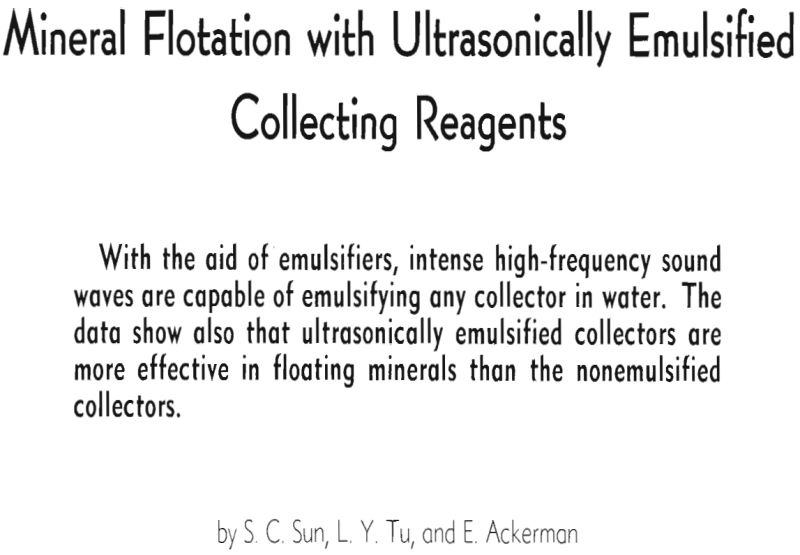An emulsion is a two-phase system consisting of two incompletely miscible liquids, the one being dispersed as finite droplets in the other. The dispersed liquid is known as the internal or discontinuous phase, and the surrounding liquid is termed the external or continuous phase.
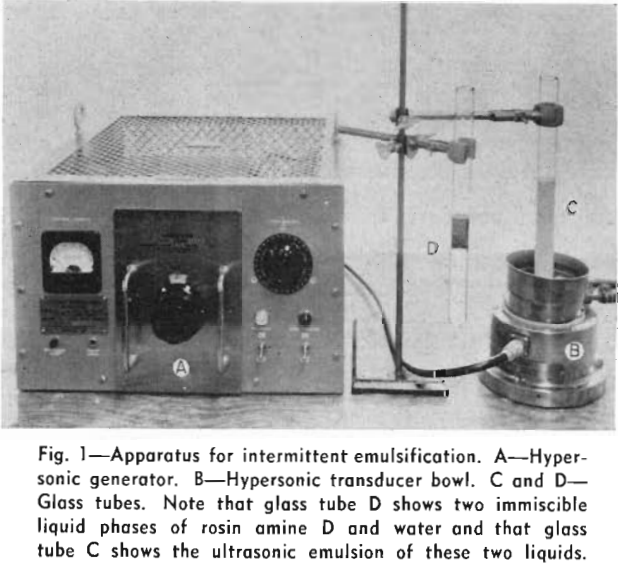
Apparatus and Experimental Procedure: Ultrasonic emulsification was performed in three steps, although a one-step method has been used: 1) emulsifying the predetermined amounts of col-
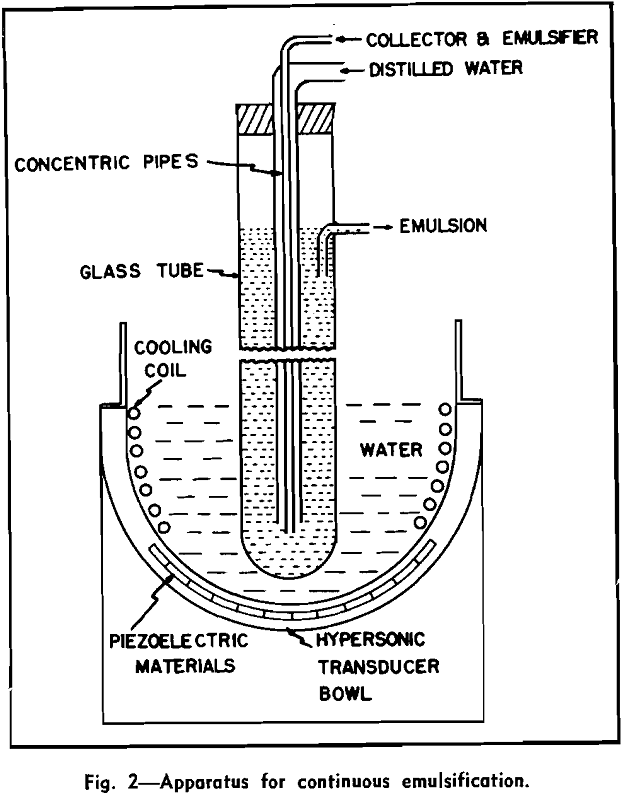
lector and emulsifier in 1 cc of distilled water; 2) adding 10 cc of distilled water and emulsifying the diluted emulsion; and 3) increasing the volume to 30 cc with distilled water and emulsifying the diluted emulsion. The time ratio of the ultrasonic emulsification used in steps 1, 2, and 3 was about 3:2:1 respectively. The one-step method consisted of placing the total 30-cc mixture of the ingredients to be emulsified into the glass tube and emulsifying it until completion.
Ultrasonic Emulsification of Collectors: The experimental results show that the ultrasonic emulsification of collectors in water can be facilitated either by improving the hydrophile-lipophile balance or hydrophilic property of the collector, or by increasing the intensity of the sound waves, or both. Emulsification is retarded or even inhibited whenever the collector is highly lipophilic and/or the sound intensity is low. Results also show that emulsification of a collector in water without the presence of an emulsifier is much more easily performed at a low concentration than at a high concentration of the collector.
Concerning hydrophile-lipophile balance, termed HLB, indicates that without the presence of emulsifier the highly lipophilic collectors exemplified by Nujol and Armeen 18D are much more difficult to emulsify in water than the highly hydrophilic collectors represented by potassium ethyl xanthate and Turkey red oil. This difference is attributed to the fact that a lipophilic collector having a low HLB is practically water-repellent and has a high interfacial tension with water, whereas a hydrophilic collector having a high HLB is practically water-avid and has a low interfacial tension with water.
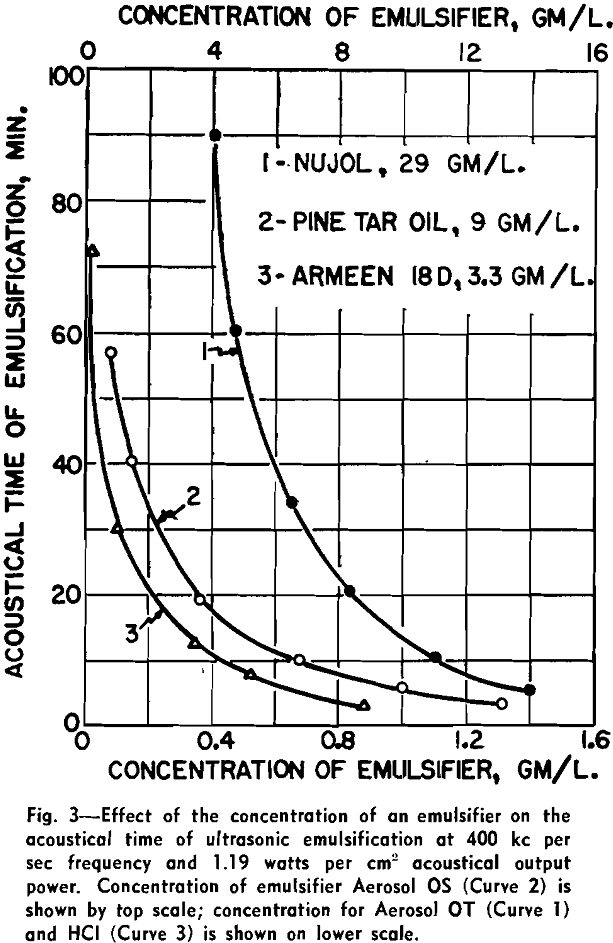
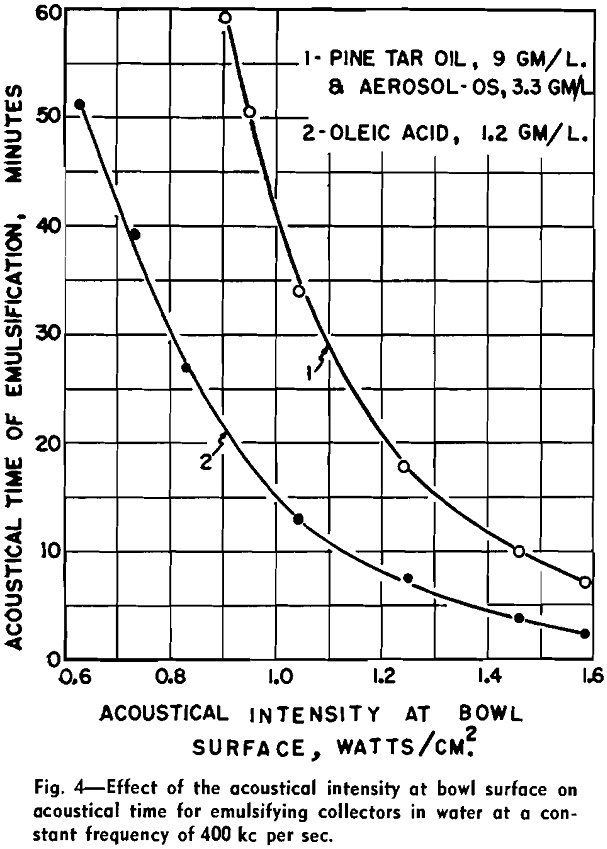
Flotation: Tests on the flotation of minerals with ultrasonically emulsified and nonemulsified collectors were performed in a laboratory Fagergren flotation machine.
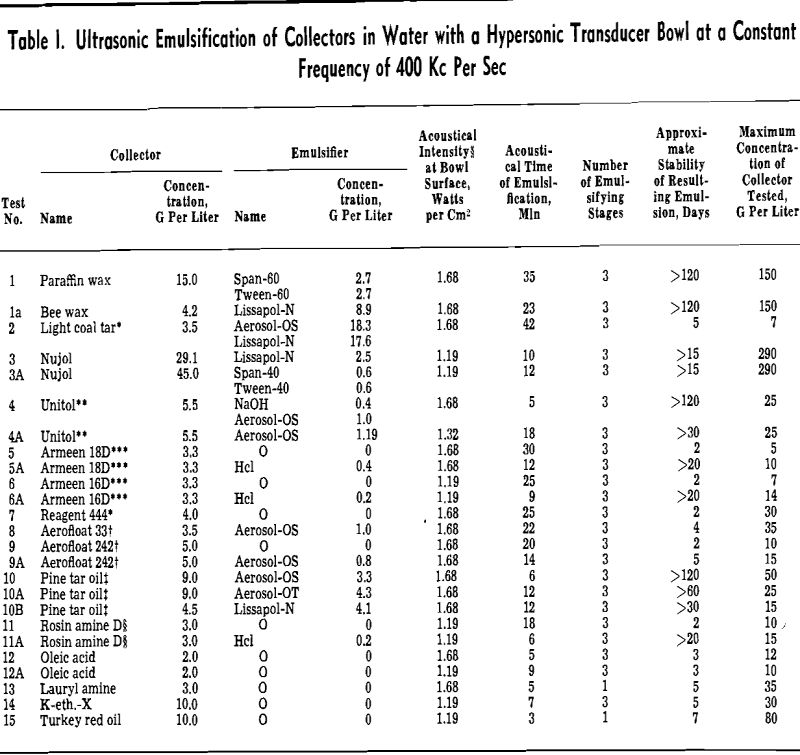
Results show that ultrasonic emulsification can be employed for: 1) converting solid hydrocarbons into oily collectors; 2) increasing the collecting power of collectors, particularly the insoluble and slightly soluble ones; and 3) shortening the conditioning time of collectors. Furthermore, collectors of high viscosity and low solubility can be dispersed in water to form fluid emulsions by means of ultrasonic emulsification and thus become suitable for direct feeding to the flotation cell or conditioning tank. The fluidity and concentration of the collector-in-water emulsions can be further adjusted by addition of water. As a result ultrasonic emulsification is expected to be useful not only for reducing consumption of collecting reagents and shortening conditioning time, but also for eliminating the difficulty of using and handling the highly viscous collectors.
